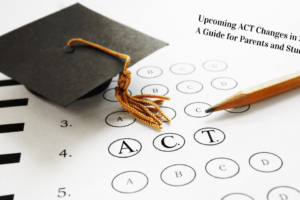
Weaning Students From Their IEPs

As students with disabilities approach graduation from high school, IEP teams might wish to consider scaling back the accommodations in the IEP. This might seem like a way to undermine student success, making parents reluctant to agree to the idea. To the contrary, the aim of reducing accommodations is to promote future success in endeavors beyond high school. Furthermore, if a student can maintain progress with fewer accommodations in place, the IEP team could view this as a success in itself.
The point of providing accommodations to students with disabilities is to minimize the barriers their disabilities present and thus grant as much access as possible to the general education curriculum. In an effort to maximize access, IEP teams can be tempted to provide every accommodation they can devise and keep these in place throughout school. Parents often want this more than other team members do.
Seeking this might not be the best course. To begin, special education law favors only applying what accommodations are absolutely necessary to permit access. The law is about granting access and promoting equity, not guaranteeing success or forbidding failure. Additionally, providing a wide array of accommodations might skew a genuine portrait of student potential in an absolute sense. If accommodations are always in place, teams might not know how student can perform without them. This can be dangerous for students entering post-secondary settings in which accommodations might not be so readily available.
Distinctions are important here. Students should get and maintain accommodations that are specific to the effects of their disabilities and vital to access. Some disabilities warrant accommodations that will need to be in place across settings. This is especially true of any involving physical adaptations, but can also be true of accommodations to presentation or even modifications to content. High school might be when some of these accommodations are most needed. Despite this, it should be when teams decide which accommodations might be able to go.
IEP teams can take stock of which accommodations are used most often by examining progress monitoring data. They can begin the process of weaning by reducing or eliminating those that are used least often or to the least effect. Any removal of accommodations must be considered to be on a provisional basis. Accommodations need not be eliminated completely. Their frequency or intensity can be reduced. Teams must monitor progress closely in response to any change. If progress continues, the team—including parents—should see this a sign of growth.
After trimming the IEP, so-to-speak, decisions become more difficult. Parents should be mindful of any push to take too much out of the IEP. Everyone involved needs to consider the ultimate point: what will a specific student do after high school and what kind of support will be available? Giving students heaps of extra time for assignments and the opportunity to take breaks when frustrated might not be options in future settings. If students have come to rely on such support, not only will determining unsupported performance be difficult, but an artificial sense of potential might develop. Teams can seek ways to replicate school-level accommodations in future settings, but can’t necessarily guarantee these.
In the spirit of fostering independence and gauging readiness, teams can continue the weaning process by taking even the most entrenched accommodations and beginning to lessen their extent. Extended time might be shortened. Tests might be made gradually closer to the same length as those taken by nondisabled peers. Other accommodations might be used only intermittently. The process might be unnerving for students and parents, but it can be done on a trial basis and in increments over the course of a school year. Ideally, it should happen over perhaps two consecutive school years, beginning in what would be a student’s junior year. Such an advanced start to the process would require early parent agreement, which understandably could be asking a lot.
Should the experiment work, IEP teams can look to future placements with increased confidence. Should it not work, the accommodations must be put back in place. Teams might wish to go so far as applying adjusted grading rubrics to assignments completed during this probationary period. Even if it doesn’t work, a team will have learned just how important those accommodations will be in post-secondary settings. Transition conversations will need to focus on how to make these accommodations work in novel settings, or on the possibility of pursuing alternate settings. Either way, parents would be wise to give such an experiment a try for the sake of making informed decisions about long-term outcomes.
Written by Jeff Hartman



